Do you love making art and using your imagination? So do we!
Art Challenge Selections
Draw what your space weather report would look like!
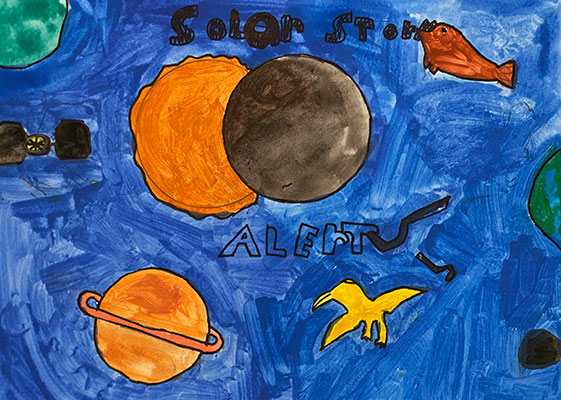
Alder, 9
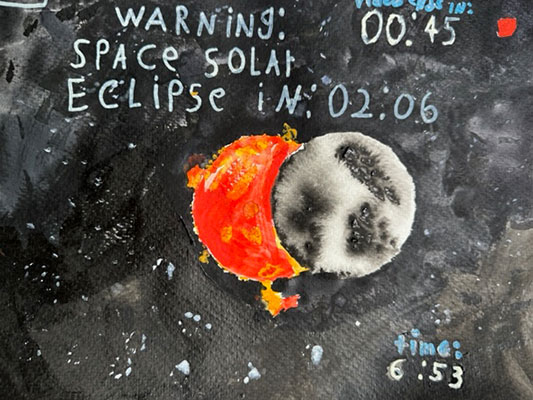
Amelia, 10
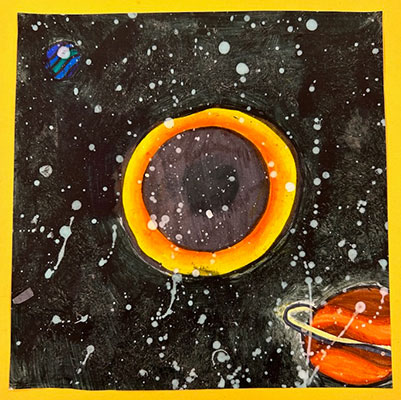
Arabella
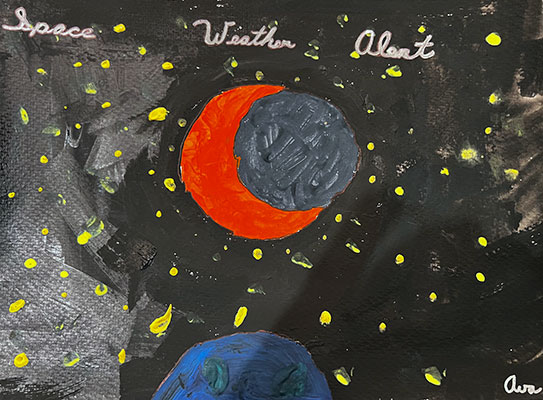
Ava
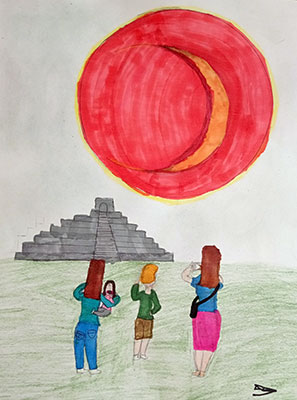
Danae, 8
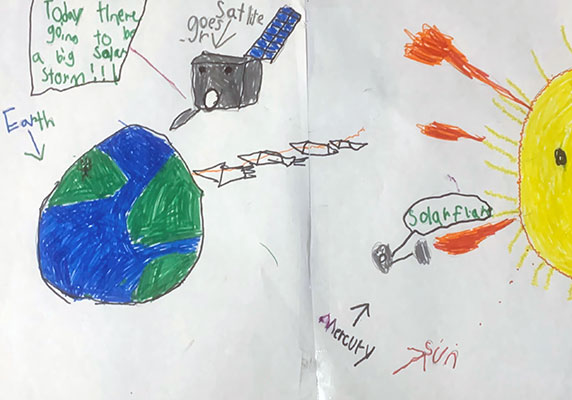
Dravn, 7
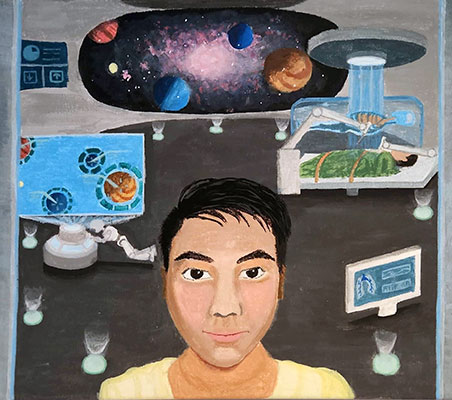
Eddie, 16
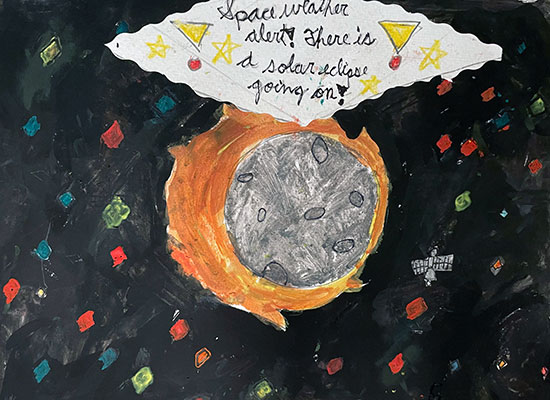
Elladya, 9
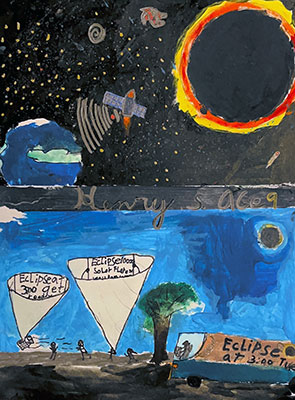
Henry, 9
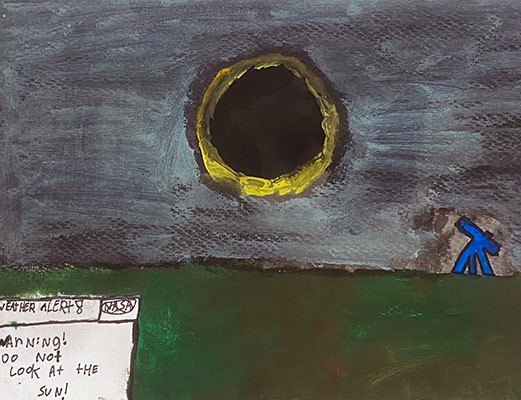
Huck, 11
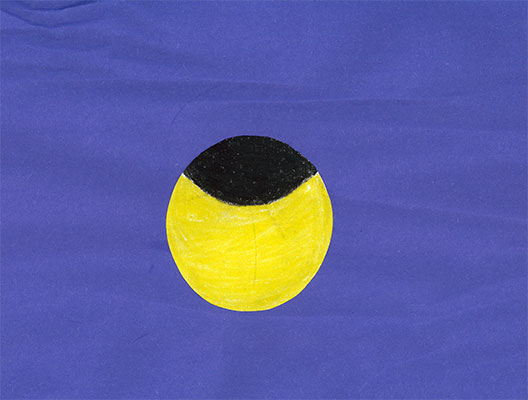
Ian
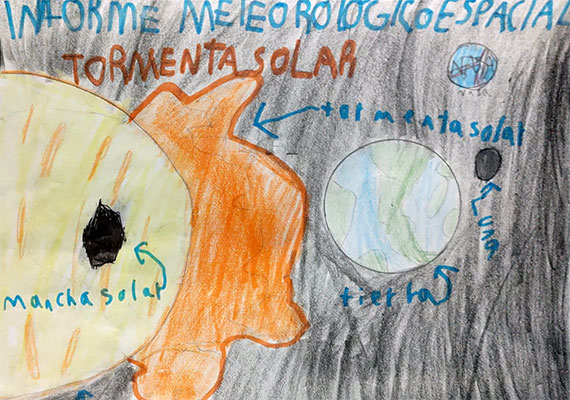
Isaias, 9
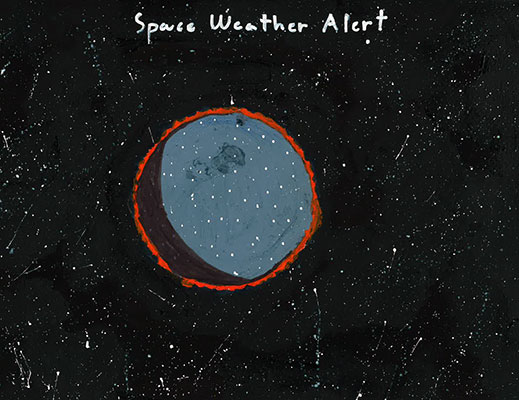
Jonathan, 11
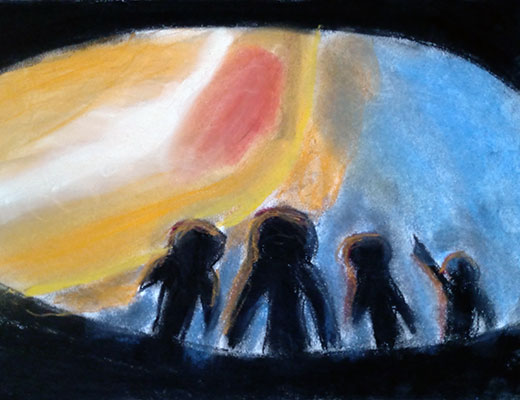
Jose, 12
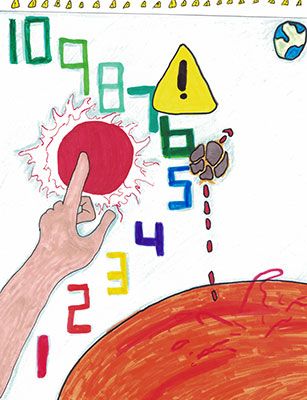
Kayden, 11
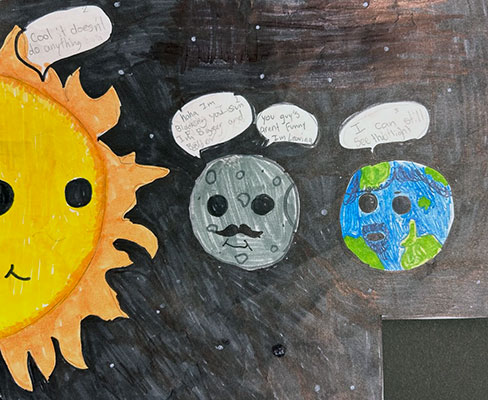
Leo
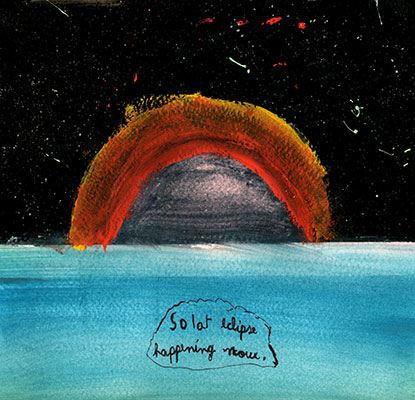
Lucas, 9
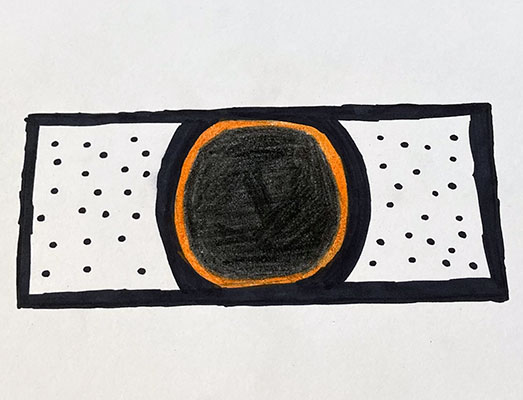
Lydia, 11
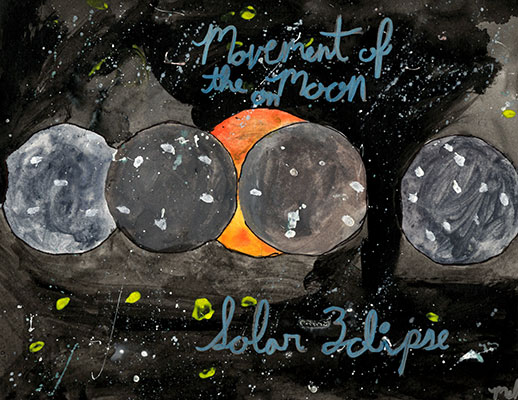
McKenzie, 9
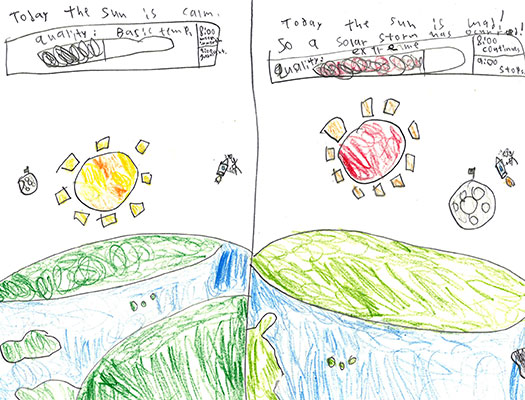
Nolan, 10
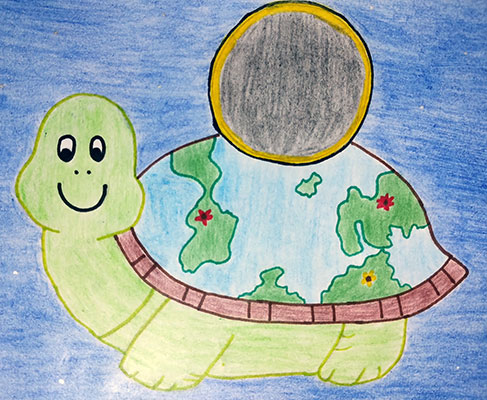
Samuel, 10
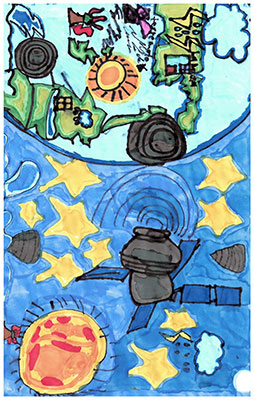
Sebastian, 7
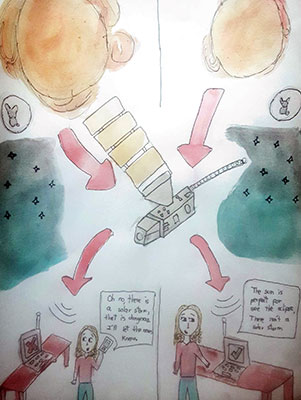
Sofia, 13
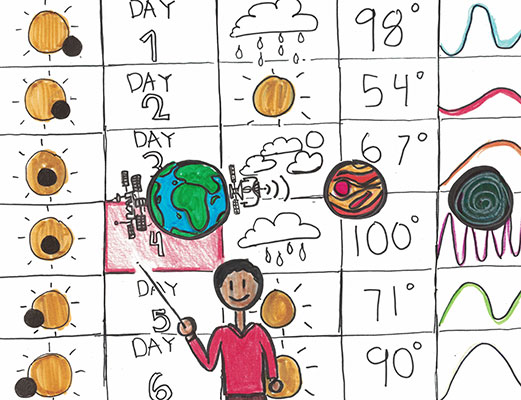
Winston, 11
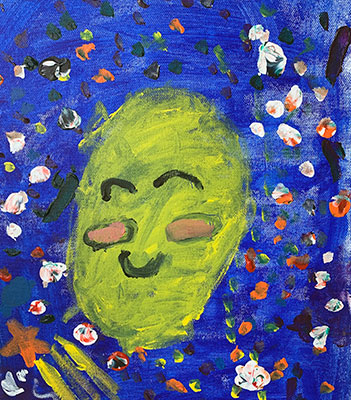
Ximena, 6
The Art Challenge:
In this activity, we'd like to challenge young explorers to think about and draw something. And after the Art Challenge is over, we'll select a few imaginative drawings to be featured on the NOAA SciJinks and NASA Space Place websites!
So, get ready to exercise that creative brain of yours! Here's what you'll need:
- Paper
- Art supplies (pencils, markers, crayons, paints – whatever you like to use)
- A grownup helper with a camera or scanner and access to email
This art challenge has concluded. For more art challenges, check out the NASA Space Place Art Challenge!
Art Challenge prompt:
Get ready: It’s time for an annular solar eclipse!
For information on how to safely view a solar eclipse, visit the NASA Solar Eclipse safety page.
On Oct. 14, 2023, an annular solar eclipse will cross North, Central, and South America. This eclipse will be visible for millions of people in the Western Hemisphere.
What is an annular solar eclipse?
An annular solar eclipse looks like a ring of light around the Moon. It happens when the Moon passes between the Sun and Earth, but when the Moon is at or near its farthest point from Earth. This means that the Moon appears smaller than the Sun and does not completely cover the Sun.
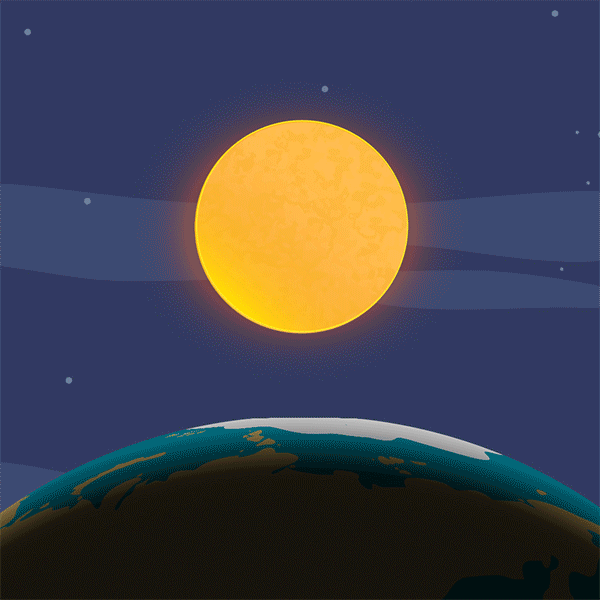
An annular solar eclipse provides us with an opportunity to observe the Sun in a unique way. However, scientists are always watching our closest star!
Activity on the Sun’s surface creates a type of weather called space weather. Space weather is serious stuff–it can even damage satellites and cause electrical blackouts on Earth!
But don’t worry: we have instruments monitoring the Sun and space weather. They provide information that helps scientists to send alerts that can help prevent any damage. (Learn more about how scientists study space weather during solar eclipses on this NOAA annular eclipse page!)
Some of these helpful instruments are on board NOAA’s Geostationary Operational Environmental Satellite (GOES) R-series, which orbits 22,000 miles above Earth!
This month’s prompt: Imagine you’re a scientist in charge of creating a space weather report for people planning to view the upcoming eclipse. How would you let people know it’s a calm day for the Sun? How would you let them know there’s a solar storm? Draw what your space weather report would look like!
Submit your artwork to the Art Challenge between 9/28/23 and 10/22/23. Selected art submissions will appear on NOAA SciJinks and NASA Space Place in late October.
How to submit your art:
Once you've gotten your ideas on the page, have a grownup take a photo or scan of the drawing and email the following to NASAKidsArt@jpl.nasa.gov:
- Picture of drawing
- First name of artist
- Age of artist
- Completed release form (download here)*
That's it! Have fun creating and we can't wait to see your drawings!




